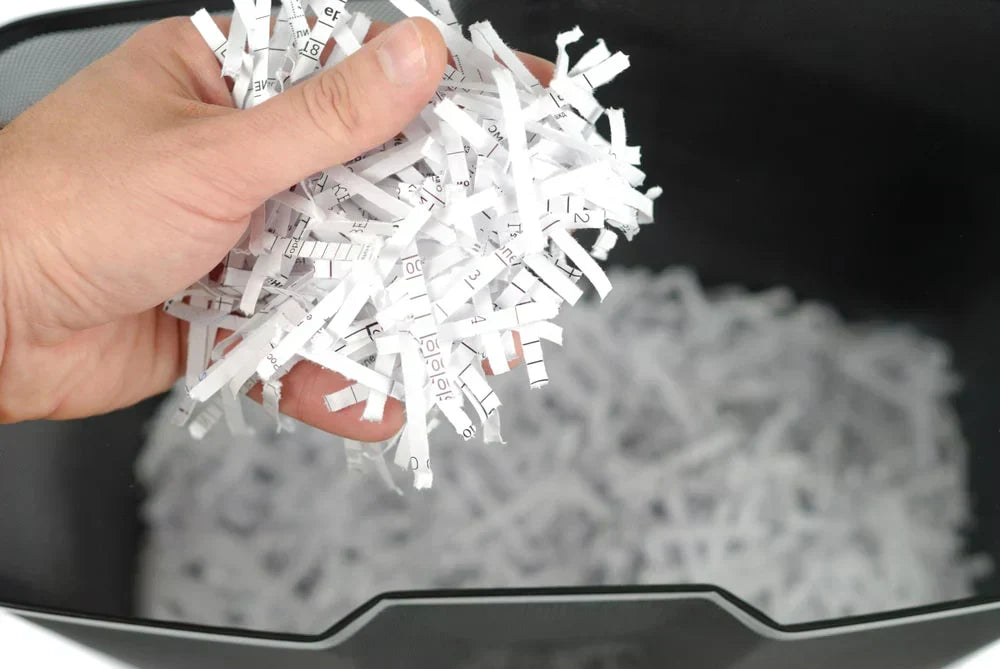
Some organizations have high volumes of paper to destroy and need a highly efficient shredder to demolish large amounts of sensitive information. Organizations that need to destroy hard drives and magnetic multimedia must have a specialized device to dispose of data thoroughly.
This blog will explore the advantages of disintegrators and shredders to help you decide which is best for your organization.
Is a Disintegrator the Best Data Disposal Method?
Using a disintegrator for data destruction is one of the most secure methods for destroying data. Disintegrators mechanically breakup computer hard drives and magnetic media, and reduce the materials into ultra-fine particles.
This ensures that sensitive, confidential information cannot be reconstructed or recovered. As a result, disintegrators are often used in industries that require high levels of data security, such as government agencies, financial institutions, and healthcare organizations.
So, how do disintegrators work?
- Materials are fed into the disintegrator through a conveyor system.
- The materials are then pulled into the cutting chamber, where they come into contact with the cutting blades.
- The cutting blades rotate at high speeds, breaking the materials into minuscule particles.
- These ultra-fine particles are then passed through a screen, or series of screens, to ensure that they are small enough to prevent reconstruction or recovery.
- Finally, tiny particles are collected in a bin or other container for disposal.
These heavy-duty data disposal devices can easily handle multiple materials, including paper, plastic, textiles, and metals. They're typically used in industries requiring high data security levels, such as government agencies, financial institutions, and healthcare organizations. In addition, disintegrators can destroy sensitive materials, including documents, hard drives, and other electronic devices.
It's crucial to handle disintegrators with care. These machines can be dangerous if not used properly, so it is important to follow their safety procedures, and to make sure that all employees in your organization are trained on appropriate use and maintenance. Additionally, adequate disposal of the particles is also important to ensure that sensitive information is not recovered.
Does My Organization Need an Industrial Shredder?
Large and small organizations must utilize an industrial shredder to destroy sensitive data appropriately, and avoid breaking data protection laws.
However, whether your organization needs an industrial shredder depends on a few factors, such as organization size, the type of information you handle, and your industry. Here are a few scenarios where an industrial shredder could be helpful:
- Sensitive Information: If your company manages high volumes of sensitive information such as financial data, medical records, or personal information, you need to use an industrial shredder to help you dispose of this confidential information safely and securely. This ensures sensitive information is not misused or leaked.
- You Have a High Volume of Paper Waste: Organizations that generate copious paper waste need industrial shredders. They can help you dispose of this waste more efficiently and ecologically. The shredded paper can be recycled, which can help reduce your carbon footprint.
- Protect Intellectual Property: If you want to keep your organization’s intellectual property confidential, an industrial shredder is essential. These devices help companies that create products or designs maintain maximum protection from theft and imitation, disposing of prototypes, designs, or plans that are no longer needed.
Disintegrator vs. Shredder
After reading about the two main data destruction methods, it's time to choose between a shredder and a disintegrator.
Let's recap some of the main things to consider:
- What material needs to be destroyed?
- Level of security requirements - how sensitive is your data?
- Capacity - how much data do you destroy regularly?
- Budget - different machines vary in maintenance costs.
If you want more information on finding the best shredder or disintegrator for your organization, click here to speak to our experts at Whitaker Brothers today.



